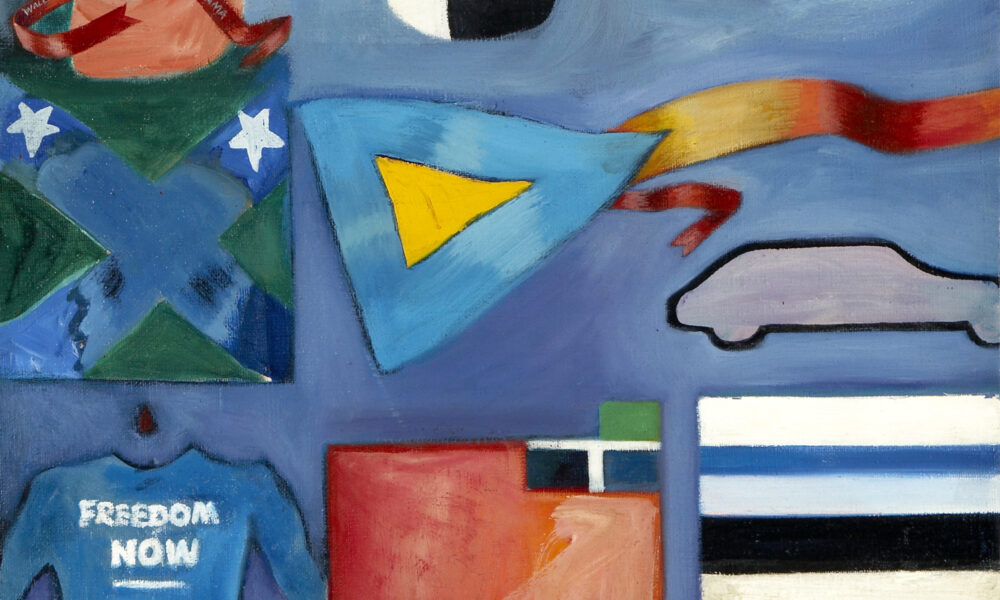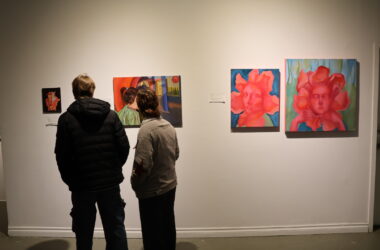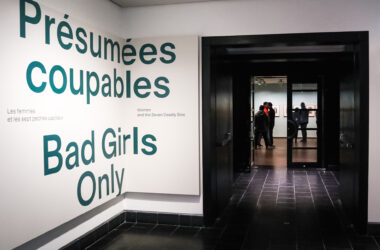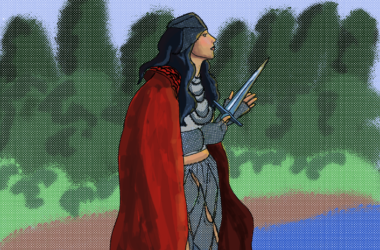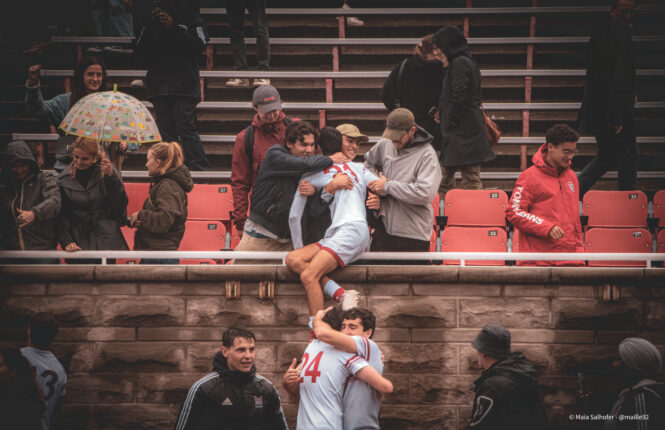Joyce Wieland stares with dots of navy for eyes, a dash of white for a nose, and no mouth. She is pale and faceless, yet her portrait seems to pose defiantly. She is challenging us.
Heart On—which opened at the Montreal Museum of Fine Arts (MMFA) on Feb. 8—commemorates Joyce Wieland, a Canadian filmmaker and artist. Her work is deeply political and feminist, spanning a wide array of mediums. Oil paintings, cardboard collages, plastics, photography, films, and quilts line the large stone halls of the MMFA’s Michal and Renata Hornstein Pavilion.
“Visitors will discover the beauty of her sensational paintings, the layered wit of her textile pieces, and the eloquence of her experimental films,” writes Anne Grace, Curator of Modern Art at the MMFA, in the exhibition press release.
Every piece in the exhibit draws a narrative as Wieland blends elements of animation, comics, and storyboarding. The foundations of her distinctive visual storytelling begin in the first room, with collage. The first few rooms showcase her early works of the late 50s and early 60s, including the faceless self-portrait, Myself (1958). Within this first room, the cardboard collages are experimental and full of wonder. It feels as if she was simply using the materials she had on hand, imbuing the work with a nostalgic and homemade quality. Her paintings in the first room are defined by bold-coloured backgrounds, wide strokes, and a spread of smaller illustrations and symbols.
Even in her paintings, she incorporates collage: Each illustration could work as a standalone symbol, yet she combines it with others within the same painting. In March on Washington (1963), linked rings, a black-and-white heart, a Confederate flag, and a shirt emblazoned with “FREEDOM NOW,” among other symbols, recount both the tension and unity during the civil rights movement in the United States. Viewers can move their eyes through each symbol on the canvas and see a narrative unfold about the fight for racial solidarity.
She pushes further into storyboarding with the painting Untitled (Sinking Liner) (1963), which breaks the canvas into four sections like a comic and shows each frame of a sinking ship. She calls these “filmic paintings” as they mirror the films projected alongside the tangible displays. The films seem to tie together each element of storytelling as if each painting and collage culminated into the visuals of her films. The museum also incorporates her photography, many of them displayed on monochromatic film rolls, as if the visitor is given a peek behind the scenes, into her camera itself.
“With her seductive wit and piercing intelligence, Joyce Wieland asked us all to do better, to care more,” writes Georgiana Uhlyarik, Fredrik S. Eaton Curator of Canadian Art at the Art Gallery of Ontario, in the exhibition press release.
Wieland cements her political focus with the collection of her quilts, embroidery, and plastic artwork. She explores Canadian identity with O Canada (1970), a series of embroidered women’s lips mouthing the newly official national anthem. The embroidery brilliantly acts as an animation of singing the anthem as each embroidered lip acts as a frame that visitors can see the song being sung when their eyes move across the fabric. Many of her pieces are also made of plastic, which often feature a collage of brightly coloured plastic ‘pillows’ that recreate movie frames, flags, and a mirror.
As visitors walk through the exhibition, the range of experimental mediums may seem scattered, lacking a centralized identity. Yet, Wieland’s multiple mediums, coupled with the curators’ choice to feature them all, challenge the idea that artists must stick to one form to craft their artistic identity. The camera roll alongside the finished films defy what it means to present a complete project as the plot of artistic development is what is celebrated. Her radical switches from painting to film to plastic mirror the revolutionary political changes of the 60s and 70s. Wieland may have started faceless, but her features are fleshed out with each storyboard, activist painting, film, and photo.
Heart On was curated by Anne Grace and Georgiana Uhlyarick. Tickets are available online until May 4.
